When it comes to creating a vibrant and harmonious avian community, it’s essential to carefully consider the compatibility of different bird species. Cockatiels, with their charming personalities and striking crests, are a popular choice for bird enthusiasts.
However, if you’re thinking about expanding your feathered family, you might be wondering, “What birds can be kept with cockatiels?”
In this blog post, we’ll explore the world of avian companionship and guide you through the considerations involved in introducing new friends to your cockatiels.
Whether you’re a seasoned bird owner or a newcomer to the avian world, understanding the dynamics between bird species is crucial for ensuring a safe and contented avian household. Stay focused.
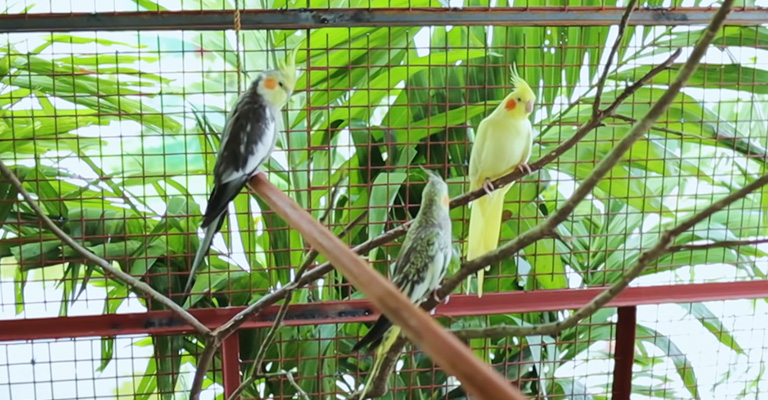
Understanding Cockatiels Behaviour
Cockatiels, small parrots native to Australia, exhibit various behaviors that can provide insights into their mood and needs. They are known for their social nature and often enjoy human interaction.
When they’re content, cockatiels will chirp softly, preen their feathers, and may even mimic sounds or whistles. However, excessive or loud vocalization might indicate stress or boredom.
Their body language is crucial to deciphering their emotions. Raised crests signal curiosity or excitement, while flattened crests can indicate fear or aggression. Tail bobbing, on the other hand, may suggest illness.
Cockatiels need mental stimulation and exercise, so providing toys and out-of-cage time is essential. They also benefit from a balanced diet and regular vet check-ups to ensure their well-being. Understanding these behaviors helps you create a nurturing environment for your cockatiel companion.
What Birds Can Be Kept With Cockatiels?
Cockatiels are social birds and can potentially coexist with other bird species under certain conditions.
When considering keeping other birds with cockatiels, it’s essential to prioritize the safety and well-being of all the birds involved. Here are some bird species that are generally compatible with cockatiels:
Budgerigars (Budgies)
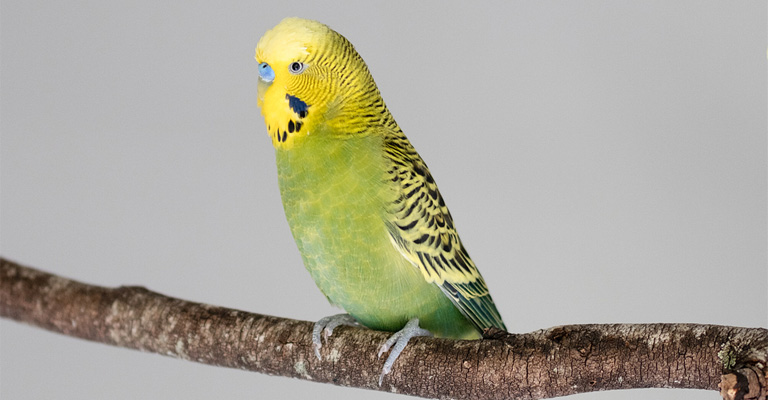
Budgerigars are small parakeets and are often a good match for cockatiels due to their similar size and social nature.
Lovebirds
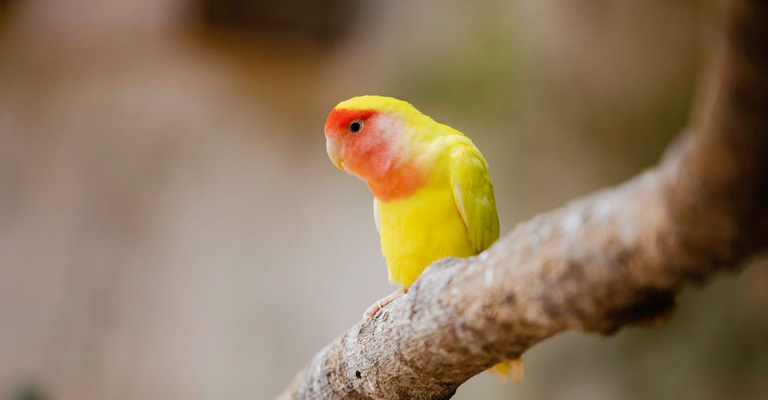
Lovebirds are small parrots known for their affectionate behavior. They can sometimes coexist with cockatiels if introduced gradually and with careful monitoring.
Parrotlets
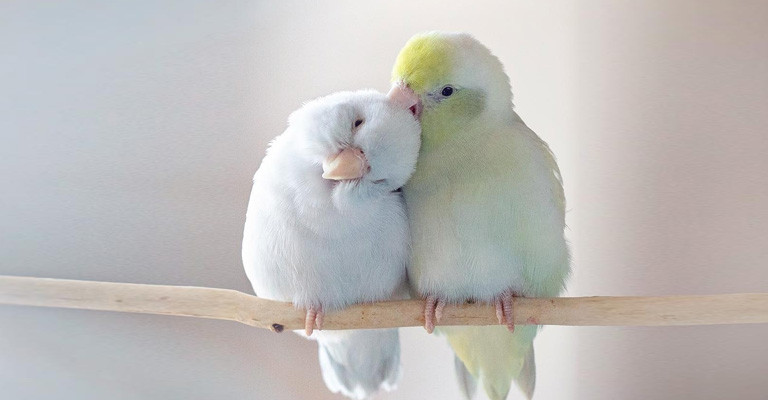
Parrotlets are tiny parrots with big personalities. They can be compatible with cockatiels if introduced properly, but interactions should be supervised.
Canaries and Finches
Canaries and finches are generally peaceful birds and can be housed in the same aviary as cockatiels as long as there’s enough space and separate feeding areas.
Quaker Parrots (Monk Parakeets)
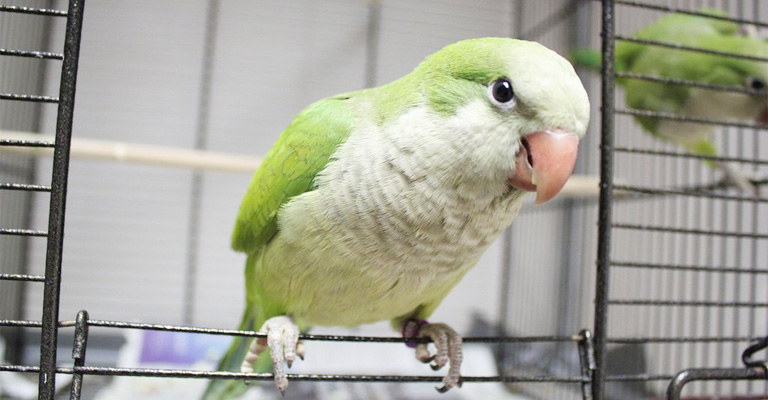
Quaker parrots can coexist with cockatiels if introduced early and with caution, as they are known for their sometimes feisty nature.
It’s crucial to provide a spacious cage or aviary with separate perches, feeding stations, and hiding spots to prevent territorial disputes. Always monitor interactions closely, especially during the initial introduction phase, as not all birds will get along.
Birds You Shouldn’t Choose to Keep With Cockatiels
Cockatiels can be social birds, but there are some bird species that you should avoid keeping with them due to potential compatibility issues. Here are some birds you shouldn’t choose to keep with cockatiels:
Larger Parrots
Birds like macaws, African greys, and Amazon parrots are considerably larger and more dominant than cockatiels. They may intimidate or even harm cockatiels.
Aggressive or Territorial Species
Birds known for their territorial or aggressive behavior, such as aggressive types of conures or some types of lovebirds, may not be suitable companions for cockatiels.
Birds with Different Dietary Needs
Species with significantly different dietary requirements may not be compatible. For example, keeping seed-eating birds like canaries or finches with cockatiels, which require a more varied diet, can be challenging.
Noisy Birds
Some species, like cockatoos and some types of parakeets, are known for their loud and continuous vocalizations, which can stress out more docile cockatiels.
Species with Incompatible Temperaments
Birds with extremely different temperaments or activity levels may not get along. For example, a hyperactive and aggressive bird like a sun conure might not be a good match for a mellow cockatiel.
Birds with Health Concerns
Avoid introducing birds with known health issues, as they can potentially transmit diseases to your cockatiel.
When considering adding another bird to your cockatiel’s environment, it’s essential to research the specific needs, behaviors, and temperaments of both species and be prepared for a gradual introduction process.
Even within species known to be compatible, individual personalities can vary, so careful monitoring is crucial to ensure the well-being of all birds involved.
Things to Consider While Choosing Birds to Keep With Cockatiels
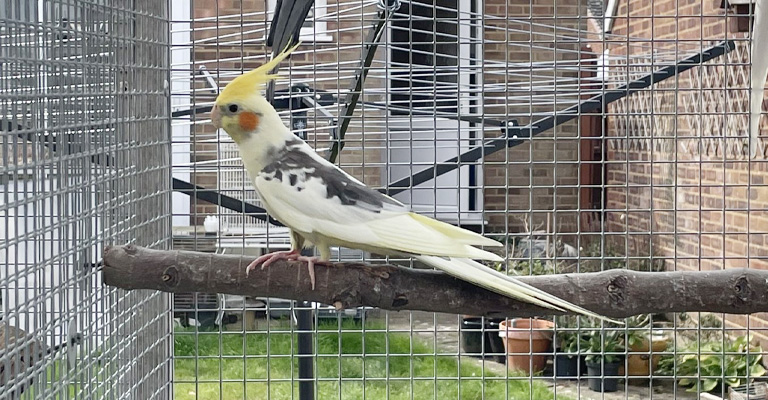
When choosing birds to keep with cockatiels, several important factors should be considered to ensure the well-being and harmony of all birds in the shared environment. Here are key considerations:
Species Compatibility
Research and choose bird species known to be compatible with cockatiels. Birds of similar size, temperament, and social needs are often a better match.
Cage or Aviary Size
Ensure you have a spacious enclosure that can accommodate the needs of all birds. There should be enough perches, feeding stations, and space for each bird to move freely.
Introduction Process
Plan a gradual and supervised introduction process. Allow the birds to get used to each other’s presence without direct contact initially. Monitor interactions closely to ensure they are getting along.
Socialization
Consider the social dynamics of the birds. Some birds are more solitary, while others thrive in flocks. Ensure that the social needs of all species are met.
Dietary Compatibility
Birds may have different dietary requirements. Make sure you can provide appropriate food for each species and monitor to prevent food competition.
Behavioral Compatibility
Understand the behavior of each species. Some birds are more territorial or aggressive, while others are docile. Compatibility depends on the individual personalities of the birds.
Health Considerations
Ensure that all birds are healthy and free from diseases before introducing them. Quarantine new birds to prevent the spread of potential illnesses.
Escape Prevention
Be vigilant about escape prevention, as different species may have different abilities to escape from enclosures.
Nesting and Breeding
Consider whether you want to allow the birds to breed. If so, research the breeding habits and nesting requirements of each species.
Separate Spaces
Have a plan for providing separate spaces or cages if conflicts arise or if one bird needs isolation due to illness or aggression.
Environmental Enrichment
Provide toys, perches, and environmental enrichment that cater to the needs and interests of all the birds in the enclosure.
Monitoring and Supervision
Continuously monitor the interactions between the birds and be prepared to intervene if any signs of aggression or stress are observed.
Consult with Experts
If you are unsure about the compatibility of specific bird species, consult with avian experts or veterinarians who can provide guidance.
Remember that not all birds will get along, even within species considered compatible. It’s essential to prioritize the safety and well-being of the birds in your care and be prepared to make adjustments or separate birds if conflicts arise.
Tips to Introduce a New Bird to Your Cockatiels
Introducing a new bird to your existing cockatiels requires careful planning and monitoring to ensure a smooth transition and minimize stress or conflict. Here are some tips for introducing a new bird to your cockatiels:
Quarantine
Before introducing the new bird, quarantine it in a separate room or enclosure for at least 30 days. This allows you to monitor the bird’s health and prevent the potential spread of diseases to your existing cockatiels.
Health Check
Ensure the new bird is healthy and has received a clean bill of health from a veterinarian before considering introductions.
Visual Separation
Place the cages or enclosures of the new bird and the cockatiels within sight of each other but with a physical barrier (like a curtain or a solid divider) in between. This allows them to observe and get used to each other’s presence without direct contact.
Gradual Introduction
After a period of visual separation (usually a few weeks), allow the birds to have brief, supervised face-to-face interactions. Watch for their body language and behavior to ensure they are not showing signs of aggression or stress.
Neutral Territory
When you’re ready for the first direct interaction, choose a neutral area outside of their respective cages. This prevents territorial disputes. Ensure there are plenty of perches and hiding spots in the neutral area.
Supervision
Always supervise their interactions closely, especially during the initial meetings. Be prepared to separate them if aggression occurs.
Positive Reinforcement
Reward positive interactions with treats and praise. This helps create positive associations between the birds.
Separate Feeding Areas
Ensure separate feeding stations to prevent food competition, which can lead to aggression.
Individual Personalities
Be mindful of the individual personalities of each bird. Some cockatiels and other birds may be more accepting of newcomers than others.
Patience
The process may take time. Be patient and go at a pace that is comfortable for the birds. Rushing the introduction can lead to stress and conflicts.
Monitoring
Continue to monitor their interactions even after they seem to get along. Sometimes conflicts can arise later, so remain vigilant.
Separate Spaces
Have a plan for separate housing if the birds do not get along or if one bird becomes stressed or aggressive. Safety should always come first.
Consult an Avian Expert
If you encounter difficulties or have concerns about the introduction process, consult with an avian veterinarian or experienced bird behaviorist for guidance.
Remember that not all birds will become best friends, and some may never fully accept each other’s presence. It’s essential to prioritize the safety and well-being of all birds involved and be prepared to make adjustments as needed.
FAQs
Yes, parakeets are often a good choice as companions for cockatiels. They are similar in size and social nature, which can lead to harmonious cohabitation if introduced correctly.
Lovebirds can coexist with cockatiels, but it depends on individual personalities. Monitor their interactions closely during introductions, as some lovebirds can be territorial or aggressive.
Canaries can share an enclosure with cockatiels if there is enough space and separate feeding areas. However, be mindful of their different dietary needs and provide a spacious cage.
Generally, it’s not recommended to keep cockatiels with larger parrot species like macaws or African greys due to potential aggression and size differences, which can lead to harm.
Finches can coexist with cockatiels if you provide a large enough aviary with separate perches and feeding stations. Monitor their interactions to ensure peace and prevent territorial conflicts.
Wrapping Up
In the realm of avian companionship, the key to success lies in informed choices and thoughtful introductions.
While there are bird species that can coexist harmoniously with cockatiels, it’s vital to remember that individual personalities and careful monitoring play pivotal roles in fostering a peaceful feathered community.
By following the guidelines and considering the compatibility factors outlined in this blog post, you can create a thriving avian family that brings joy and fascination to your everyday life. Best of luck.